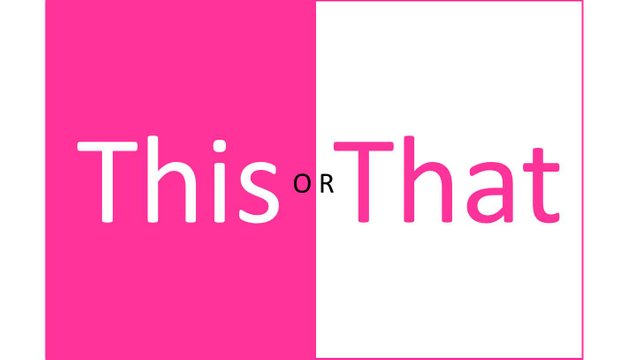Chapter 2 - You Can't Have One Without The Other - Commentary on the Tao Te Ching
Hi Internet family,
This is Chapter 2 of a series where I post, and provide commentary, on the 81 chapters of the Tao Te Ching. The Tao Te Ching, or “Way of Virtue”, contains the essence of Taoism - a fundamental influence in Chinese thought and culture, in roughly 5 000 English words. It was written 2 500 years in sixth century B.C. by Confucian contemporary and keeper of imperial archives, Lao Tsu (Laozi). Whereas Confucianism is concerned with day-to-day rules of conduct, Taoism is concerned with a more spiritual level of being. The book I’ll be using is translated by Gia-Fu Feng and Jane English.
Side note – I recommend reading the original text of the chapter first, and then the commentaries for each section. I’m still studying this text and may err with some passages, but I hope you enjoy the analysis provided--feedback and discussion is always welcome.
The Tao Te Ching original text
- Imerick commentary
Two
Under heaven all can see beauty as beauty only because there is ugliness
All can know good as good only because there is evil.
- Our human intuition interprets a duality about nature. There’s life and death. This or that. Yes or no. Up and down. We recognize one because of the other. However, this binary exists only ‘under heaven’, and so long as we believe the binary, we will remain, “under heaven”.
Therefore having and not having arise together.
Difficult and easy complement each other.
Long and short contrast each other;
High and low rest upon each other;
Voice and sound harmonize each other;
Front and back follow one another.
- These examples illustrate how two, seemingly, opposites are actually complements that represent one whole. If you ever “have” something, it’s because, at the same time, someone else does not have it. Things are difficult because they are not easy; in order to be long, you need a lot of short; to know high, you must first know low; to hear voice, you must hear sound—and all these begin at the same point. Have you ever seen a mountain with only one side?
Therefore the sage goes about doing nothing, teaching no-talking.
The ten thousand things rise and fall without cease,
- The sage, one who has mastered the Tao, knows that the eternal Tao cannot be spoken, so he sees no reason to talk about it. Yet, as a sage, he contains great wisdom, which many people attempt to learn, thus, inextricably, making him a teacher. He teaches his students by placing them in situations where the default mode of thinking leads them to be stuck. He asks nonsensical questions such as “what is the sound of one hand clapping?” or, “what is ‘I’?” The goal being to get the student to bring down the “ten thousand things”, or his words, to simply see and experience what is, until words are inevitably needed again.
Creating, yet not possessing,
Working, yet not taking credit.
Work is done, then forgotten.
Therefore it lasts forever.
- These four lines are common patterns the sage follows. One who is in flow with the Tao behaves in a selfless manner. Their actions don’t serve to satisfy their desires (because they don’t really have any), they are done because it is the thing to do. For example, imagine you are walking on a sidewalk and you notice a branch in the street. The branch is quite large and it will definitely impede any car attempting to drive this road. So, you move the branch out of the way. Now, moving the branch doesn’t benefit you in any way. No one saw you do it, so it doesn’t matter if you take credit for it, and you’ll probably forget you did it because there was no significant consequence you could observe. However, you moving the branch out of the way creates a situation where drivers on that particular road don’t have to deal with the obstruction that is the branch. They can continue their day thinking, “just another average day”, but the average day (the thing that last forever) would not have been possible without your moving of the branch! The greatest actions of mankind (that we admire) are not performed for the benefit of one person, or one group of people, they are performed for the benefit of others.
.
.
.
Thank you for reading all the way through! I appreciate your time and any comments you have to offer. If you want to support more work like this, leave an upvote! If this post is older than seven (7) days, consider leaving an upvote on my more recent posts as it supports me more.
-- @imerick

Hello @imerick, thank you for sharing this creative work! We just stopped by to say that you've been upvoted by the @creativecrypto magazine. The Creative Crypto is all about art on the blockchain and learning from creatives like you. Looking forward to crossing paths again soon. Steem on!
Much appreciated! Will definitely be posting more work like this!